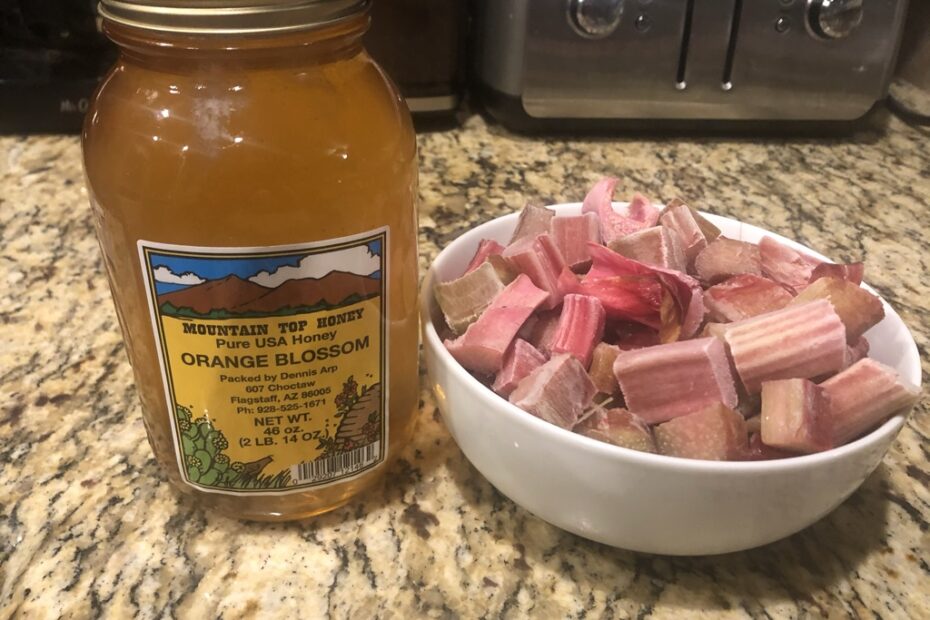Rhubarb is a truly unique vegetable! Rhubarb’s tartness plays very well with the honey to make a delicious mead! In this article, I will outline my one gallon rhubarb mead recipe.
How to Add Rhubarb to Mead
There are two ways that you can add rhubarb to mead, either as a ‘juice’ that has been extracted from the stems or the stems themselves. The cleaner way to add rhubarb, in my opinion, is to extract the flavor from the stems by boiling them.
For a one gallon batch, you will want to start with about 4 cups of chopped rhubarb. I, conveniently, had rhubarb from the garden for this, but grocery-store-bought rhubarb works just fine! Freeze the rhubarb prior to boiling. The reason for freezing is that it breaks down the cell walls of the plant, and lets more flavor become available for extraction. I recommend freezing once, then thawing, then freezing again for a second time.
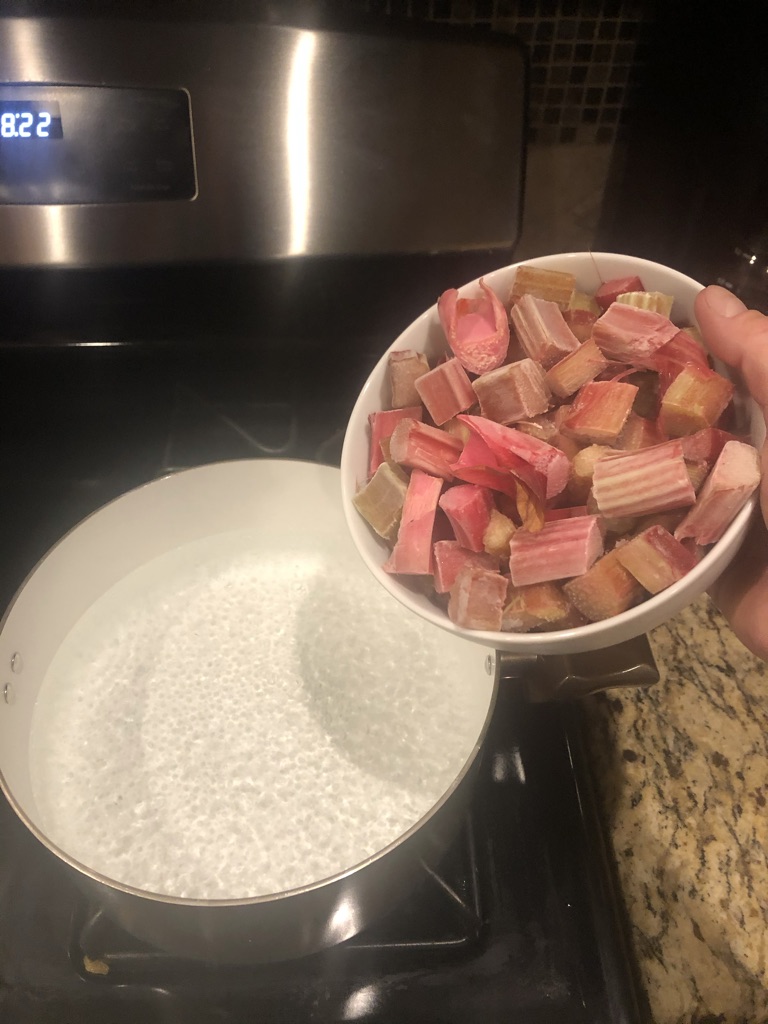
Boil about 2 quarts of water. Add the frozen rhubarb to the boiling water. Let simmer for about 30-40 minutes, stirring occasionally.
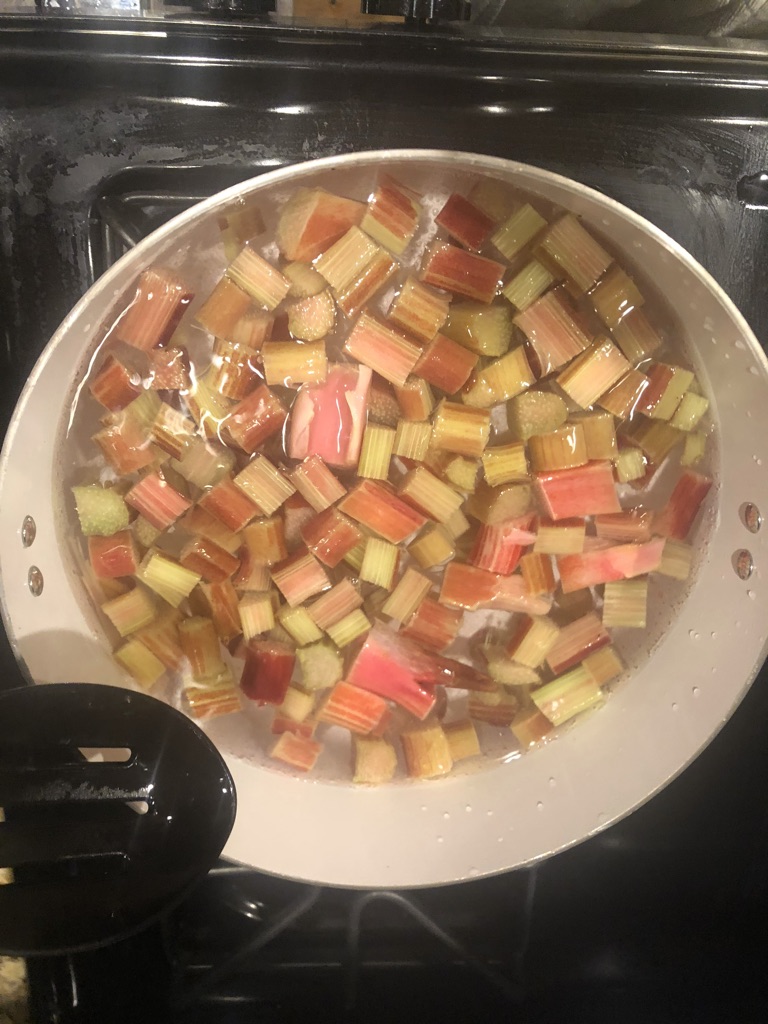
After 30-40 minutes have elapsed, you should have a nice pink liquid. Strain out the rhubarb particles. You’ll notice that the rhubarb bits are very pale in color now!
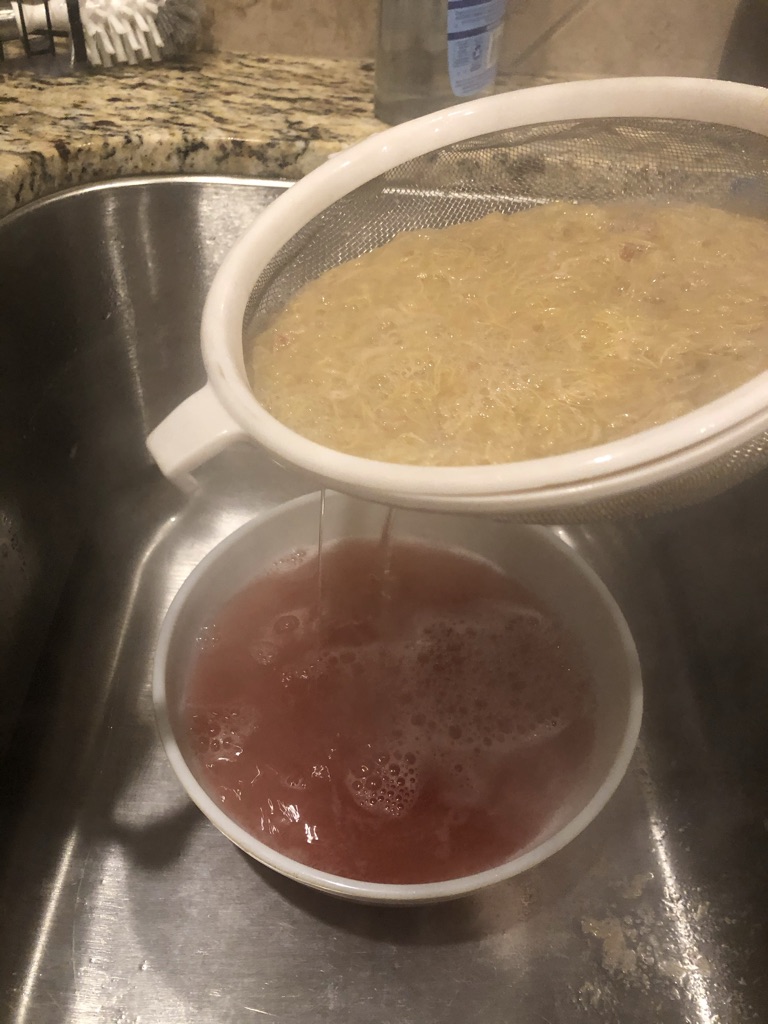
Let the pink rhubarb liquid cool to about 120-130F before adding to fermentor.
Now let’s get to the recipe!
Rhubarb Mead Recipe
Stats:
Original Gravity 1.095
Final Gravity: 0.994
ABV: 13.2%
Honey:
Local Orange Blossom Honey- 3lb. (1qt by volume)
Other Additions:
Rhubarb- 4 cups (chopped and frozen)
Water:
1 Gallon Local Tap Water (or favorite bottled water)
Yeast:
Yeast Nutrients:
Go-Ferm Protect Evolution and Fermaid O
Clarifying Agents:
Pectic Enzyme and Biofine Clear
Acid Additions :
Tartaric Acid– 1.25g
Instructions:
Prepare rhubarb as discussed at the beginning of article. Clean and sanitize fermentor. Add the boiled rhubarb water to fermentor after it has cooled to ~120-130F. Warm jar(s) of honey. Add honey to warm water in fermentor. Top off fermentor with cold water to the one gallon mark. Cool must to ~70F. Carefully shake fermentor to oxygenate must. Rehydrate yeast per instructions on packet. Pitch yeast and Go-Ferm Protect yeast nutrient. Pitch pectic enzyme. Put on airlock or blow-off tube. Add Fermaid O throughout active fermentation (ie. days 2, 4, and 6). Transfer to secondary fermentor after ~2 weeks, leaving yeast cake behind. Add 1/2 tablet Campden and 1mL Biofine Clear at transfer. Transfer again as necessary for clarity. Once mead is sufficiently clear, bottle and age.
Tips:
Clarifying Agents:
As stated in my other articles, clarifying agents are not absolutely necessary. However, who doesn’t love a brilliantly clear mead? I think first impressions go along way with any homebrewed beverage, and putting out a crystal clear mead goes a long way.
The two clarifying agents that I used for this mead were pectic enzyme and Biofine Clear.
Pectic enzyme helps to clear ‘pectin’ which is a molecule that holds plants’ fiber together. Pectin can cause a haze in finished beer, mead, or cider. It is best to add pectic enzyme when you initially pitch the yeast, but if you forget, you can always add it during fermentation.
Biofine Clear is a product that helps to clear yeast and other haze-forming molecules. This is best added later on in the fermentation process. I generally add it when transferring the mead to secondary or tertiary fermentors.
For a more detailed look at clarifying mead/beer, click here!
Acid Additions:
This is another part of mead making that is not absolutely necessary. However, when you want to take the next step in making the best mead you can, acid additions are huge!
There are three acids that are generally used in mead making: citric acid, tartaric acid, and malic acid. Most of us are familiar with citric acid. Tartaric acid comes from grapes and lends wine-like notes to mead. Malic acid comes from apples and gives that same flavor to mead.
There are also acid blends that contain the three of these acids together.
Unfortunately, there is not an easy answer as to how much acid you should add to your mead. This should be done to taste.
I highly recommend setting up a tasting sampler for yourself with your mead. Add different amounts of the acid to the mead to see what plays best. Most people find that adding either tartaric acid or an acid blend is the ticket to success.

Grow Rhubarb at Home:
I can’t recommend growing rhubarb at home enough! You generally start growing rhubarb from the rhizome (similar to hops). It won’t grow a whole lot in the first year, but after that, the growth is surprising!
It is also a very hardy plant. It’ll start popping up even in the winter months, and continues to grow very well throughout the summer. We had more than enough stalks this year for bread, pie, and mead!
Just remember to not eat the leaves as they are high in oxalic acid.
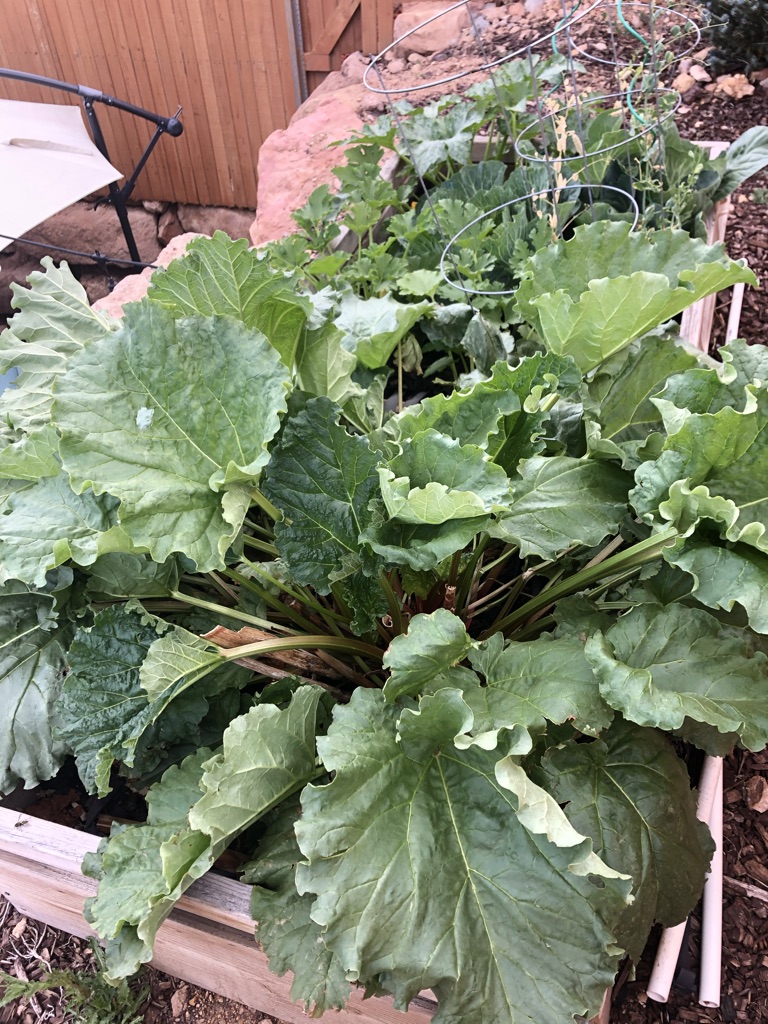
Thank you so much for stopping by!
For a comprehensive how-to for mead making, please click here!
If you do have any questions, I am active on Facebook and Instagram. Feel free to contact me there!
I’ll end with a picture of my oldest son playing with rhubarb!

